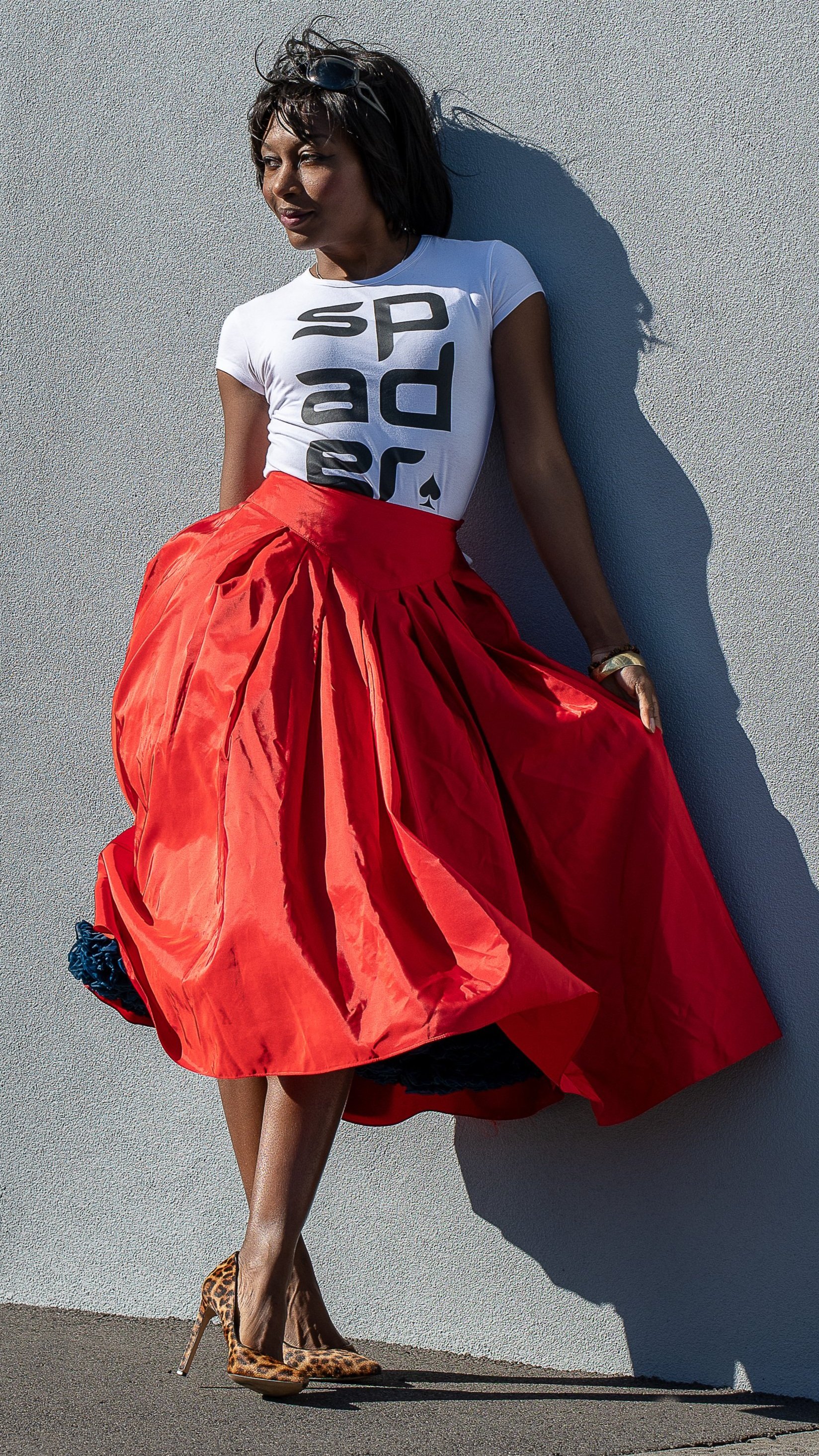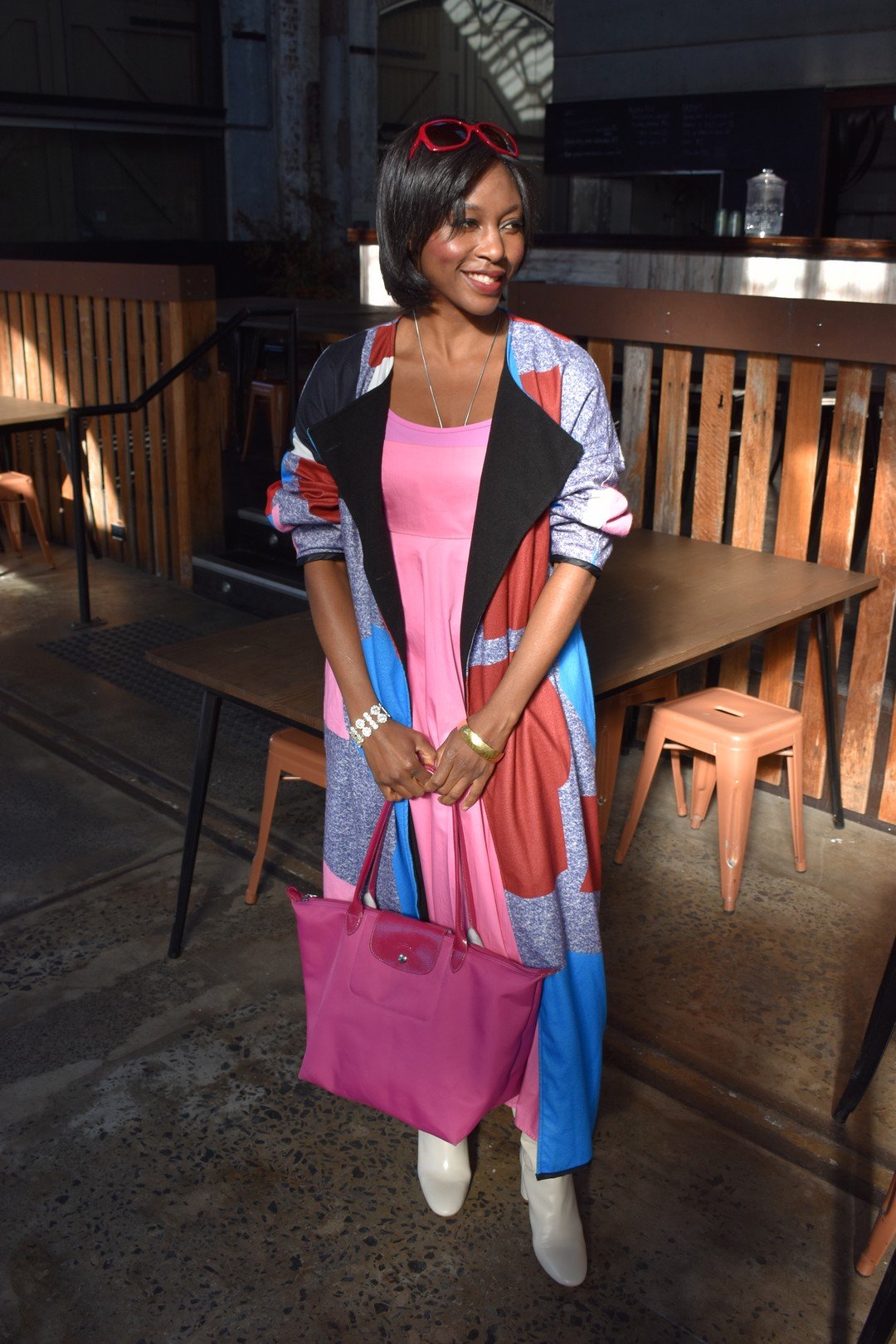I've been into sustainable fashion since I was 15 years old - wearing, promoting, styling and living the preloved lifestyle. This was long before sustainable fashion was a global movement and long before the term ‘sustainable fashion’ was a buzz word for nearly every brand and flocks of influencers. I abhorred fashion trends from a young age. I couldn’t understand why so many people clung tenaciously to a made-up reality where everyone is expected to wear the same trending styles of clothing until the dictators of fashion decided it was time to decree the next short-lived trend. This is fashion’s Jedi mind trick.
The fashion industry
In 2019, the size of the global apparel and footwear market was $1.9 trillion USD. It’s been projected to reach $3.3 trillion dollars by 2030. Several reasons exist as to why this industry is so lucrative. There’s the craftmanship, art, design, creativity, skills, beauty, artisanry and of course practicality that leads to the production of items that we love and find useful. In many instances, most or perhaps even all of these talents deserve to garner significant profits. But then there’s the dark side of the industry that has been inducing tremendous profits through atrocious practices. This side has been thriving on extreme capitalism with no concern for humans, animals nor the planet. The sole purpose is to amass huge profits at all costs. This is why we currently have 100 – 150 billion garments being manufactured each year, with only an estimated 8 billion humans to use them. It’s unsurprising that about 87% of items manufactured each year end up in landfill or incinerated.
Where fashion trends went wrong
This unchecked, environmentally degrading side of fashion has been able to grow and thrive so expeditiously in part due to the use of fashion trends. For probably about a century, following fashion trends was a significant part of social culture and clothing. It was portrayed in different forms. Fashion collections produced by brands have traditionally been designed and manufactured based on the four western weather seasons of Spring, Summer, Fall and Winter. The trends generally adhered to this as well. Fast fashion hijacked and exacerbated the idea of trends and took it from about 4 trend cycle collections a year, to about 110 trend and microtrend collections a year. Naturally the time from one trend to the next decreased in the process. This is one of the factors that lead to over 100 billion garments being manufactured each year. Not to mention the tsunami of environmental and social justice issues from this overproduction and overconsumption.
Fashion’s environmental and social injustice issues
For too many decades, the grody side of the fashion industry has been using clever big-budget advertising, marketing, influencers and celebrities, to successfully manipulate people into feeling that they’re not enough unless they’re wearing the latest fashion trends. They’ve been able to control this aspect of social culture and use it to catapult their profits by somehow coercing many people to consistently buy apparel they don’t need. This is all in the name of aspiring to fit into this warped system that requires allegiance to whatever is trending in the moment.
With more trends being put out each year, planned obsolescence by clothing brands has become rampant. This means clothes are being designed for limited use with shorter life spans so that consumers are forced or encouraged to repeat purchases because the initially purchased items are not durable. The garments made by many fashion brands are increasingly being made from cheaper, poorer quality materials such as polyester. When something is damaged, it’s often less costly to buy a new one than to repair it. Products made in this manner very often end up in landfill in relatively short periods of time. In other words, these clothes are made to be disposable. This is the take-make-waste system that exists in fashion and several other industries.
The cost of the trends
The environmental damage from this excessive oversupply occurs at scale through deforestation, ocean and freshwater pollution, destruction of ecosystems and animal habitats, desertification, toxic chemical loading in soil and water bodies, etc. UN Climate Change states that annually, 1.2 billion tonnes of greenhouse gases are emitted from textiles production. By some calculations, sector emissions are projected to increase by more than 60% by 2030. In addition to that, there’s the devastating problem of modern slavery where garment workers are exploited, abused and drastically underpaid so that brands can make extreme profits. According to the 2022 Ethical Fashion Report conducted by The World Baptist Aid, 60 million people work in the global fashion industry. To give context to the general nature of social injustice and inequality in the industry, only 10% of companies surveyed in the report could show evidence of paying liveable wages to garment workers.
The personal style con
In the last few years, mainstream fashion began to drop the habit and promotion of following fashion trends. Embracing one’s own personal style became the thing to do. At the outset this shift appeared very positive for the environment and consumers alike. However, it didn't take long for fast fashion to find a way to also capitalise on the personal style wave by getting people to 'find or express their personal style' through constantly buying lots of fast fashion.
The shocking and sad truth is that following fashion trends never stopped. It simply changed form. OVERCONSUMPTION HAS BECOME THE LONGSTANDING TREND. In fact, overconsumption is our modern cultural trend. We’re consuming 400% more clothing than we did 20 years ago, while the length of time we use the garments has fallen by almost 40%. It’s no longer only about buying trends and microtrends to fit in with everyone else and the culture. Now the normal thing is to just buy stuff period because it’s easy, cheap or convenient to do so, then throw it away when you’re bored with it. And then buy other brand new stuff again and repeat the cycle. Fast fashion has made clothes more affordable than ever before.
The fashion TRENDmill explained
The fashion TRENDmill (or fashion treadmill) is a phrase I came up with in 2016 to describe this modern culture of mindless overproduction and overconsumption of clothing that has become too common and normalised in our world. With these factors being the trend, this conveyor belt system is fuelled by the continuous take-make-waste linear cycle on steroids.
We take (extract raw materials or virgin resources from the environment at enormous rates far beyond what we need). Then make (manufacture far more garments than is necessary or will be used). Followed by waste (majority of clothes end up in landfill relatively quickly). Disposability of clothes is embedded and expected in this cycle either through the culture of it or through planned obsolescence. There’s little or no consideration for reusing or prolonging the life of the textiles or the damage the TRENDmill system inflicts on the planet and its inhabitants.
The TRENDmill and general overconsumption
There’s a very strong throughline of the fashion trendmill concept with other waste streams such as food, furniture, electronics, automobiles, the built environment and hospitality.
We’re consuming more products than we ever have in human history. Nearly A$66 trillion worth of stuff is being purchased every year globally which is the equivalent of an estimated A$2 million per second. These purchases include the gamut of material stuff and possibly services. The world’s use of material resources has increased ten-fold since 1900 and is projected to double again by 2030. It’s been projected that the consumer class will reach 5 billion people by the year 2030, meaning 1.4 billion more people will have discretionary spending power which explains why consumption rates are expected to double unless we get off the TRENDmill.
We’re consuming our way into our own extinction
With these enormous levels of manufacturing and consumption, environmental degradation is at an all time high. This comes with things like toxic chemical loading on soil and water and extreme plastics pollution. These and other factors have been known to have fatal impacts on human health. As production keeps increasing, it looks as if we’re consuming our way into our own extinction.
A drastic reduction of natural resource use is critical. We need cultures and systems based on environmental sustainability and circular economy principles. There are colossal opportunities for us to stop the rapid flow of materials to landfill and reuse or repurpose these materials instead. And in the process, only take what we need from the earth. It will make our lives healthier, save the lives of animal species, reduce biodiversity loss, give us cleaner water, a healthier planet amongst other benefits.
How to get off the fashion trendmill
We currently have enough clothing on the planet to cater for the next 6 generations of humans. From the start of my sustainable fashion career, I've always talked about ignoring trends in favour of finding and expressing your personal style for the long term through secondhand garments (and not fast fashion). Secondhand clothing includes contemporary styles and clothes from nearly every fashion era dating back almost a century. One of the coolest ways to curate a sustainable wardrobe is to mix and match styles from one or multiple fashion eras to create your own individual style. It’s likely that this one-of-a-kind wardrobe tailored to your preferences will have any or all of these outcomes:
1. keeping your clothes for longer periods of time because you always look great even with very little effort
2. saving financial resources because you’re buying less brand new stuff
3. evolving to the best or desired version of yourself using secondhand clothes.
Getting off the fashion trendmill helps reduce clothing waste because in a sustainably curated wardrobe, the outfits suit your body, lifestyle and personality. With these aspects fulfilled, hopefully the temptation to consistently buy new clothes or fast fashion all the time can begin to fade or get eliminated altogether.
Getting off the trendmill on a systemic level
Ultimately, we need to implement circular economy principles into textiles and other industries. Things will shift when we change our relationship with clothing and the culture surrounding consumption of other material things. Here's how:
Reuse - restyle, repair, resell, repurpose, buy secondhand, redesign, swap, hire, rent, borrow, upcycle
Buy new from ethical & sustainable brands - (Not brands that greenwash). Patronise brands that are transparent about how many garments they manufacture, their entire supply chain and their manufacturing processes. Also buy from small, local and emerging designers
Advocate for system change - simply by living an authentic sustainable lifestyle when and where you’re able even if you don't proclaim it publicly. You can also gently and kindly nudge your immediate circles and communities into sustainable habits or run community events like clothes or other item swaps that inspire people to action. You can even push for policy and legislation change through your local and federal political representatives.
*Perhaps the most imperative option is for us to shift our focus away from filling our lives with material stuff and ascribing such extreme value to material things. Placing higher value on experiences and more positive developments could be the new and hopefully permanent wave.











